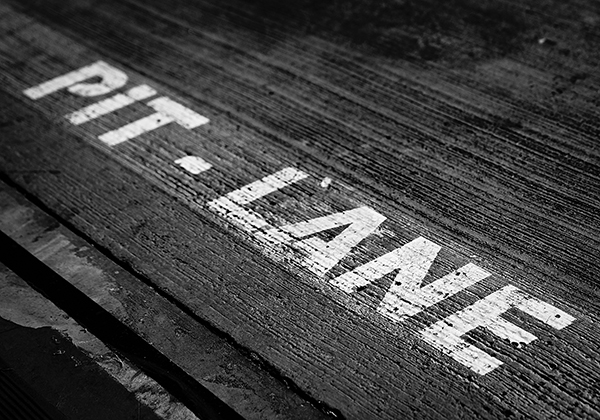
Compare the bus in the garage to a racecar in the speedway pit
By Christopher W. Ferrone
This story originally appeared in the January 2006 issue of BUSRide Magazine.
Running an efficient garage operation is not as straightforward as it may seem, where safety, reliability, production and logistics come in to play at every step. A simple and concise approach might be to compare the stops the bus makes in the garage each day to a racecar pulling into the pit at a speedway.
This does not in any way suggest that your crew should perform maintenance and repairs hastily and with a lack of care. To the contrary, they should do the work with the same degree of vigilance and focus as an Indy Car pit crew.
In this case, the term “pit stop” likens garage operations to the totally dialed-in procedures perfected at the racetrack. This more focused approach unites each duty in a well organized, carefully orchestrated set of steps that technicians conduct with care and diligence to covers all fundamental aspects of the vehicle — fuel, lubrication, tires, adjustments and driver needs.
There is no reason a motorcoach shouldn’t receive a similar but more heavy-duty pit stop in the same timely manner. The important factor here is a team that performs a well-rehearsed routine.
Begin with a list of tasks to accomplish in one session within a preset format. This process ensures every crewmember understands his responsibilities and expectations. He accomplishes his task in a precise manner and double checks for anything missed. Some items to cover when the motorcoach returns to the garage at the end of the duty shift are fueling, lubrication checks, lights, tires, driver requests and of course daily vehicle inspection report items.
Obviously, anyone working in the garage will take care of these basic procedures in some fashion. Again, the point here is not necessarily about what is to be done, but how to accomplish everything on the list in an orderly fashion, and at the same time not miss something unique during that pit stop.
If you are an Indy Car fan like I am, you watch the master at work any given Sunday during the racing season. I am speaking of course of Roger Penske.
Watch his or any other pit team closely and you will see each member of the crew has his own dedicated duty to complete. One man for tires, one for fuel, a man who makes adjustments and, of course, the crew chief. Each man goes about his duty in a way that is somewhat independent of the other crew members — not to suggest your crew members act militantly in performing only their duties and not helping out other members.
The pit stop approach focuses on the specific maintenance and repairs to each motorcoach each day to keep it safe, reliable and ready for its next day in service.
This technique not only helps accomplish a greater number of tasks in an orderly manner and less time, it also helps the crew members feel they are part of a team, and that no one crew member is doing more than another. Team building is vital for the success of any business regardless of its nature.
Transforming your maintenance staff members into your pit crew can enhance daily performance in the garage and improve production as well as foster trust and camaraderie.
Depending on the size of the team, a crew member may perform one or several specific tasks on each motorcoach that pulls into the garage. Assign members as washers, interior cleaners, mechanics and even a body man when the need arises.
As the motorcoach arrives, each member should attack his assigned task in the prescribed pit stop procedure. As each team member completes his tasks, he should inform the crew chief that the work is complete as expected. If an additional issue has come up, the crew chief can reassign a team member to perform the work.
This approach usually results in a well-maintained motorcoach fleet, attended to in a reasonable amount of time.
An Indy pit stop takes between eight and 11 seconds, while an efficient pit stop on a motorcoach may be as a long as 30 minutes. But, again, this process is not about speed. It is about organization and routine. Routines lend themselves to easy updates, adjustments and modifications to coincide with your system as it evolves and expands. Above all a routine is about the proper care, safety and accuracy of your work.
